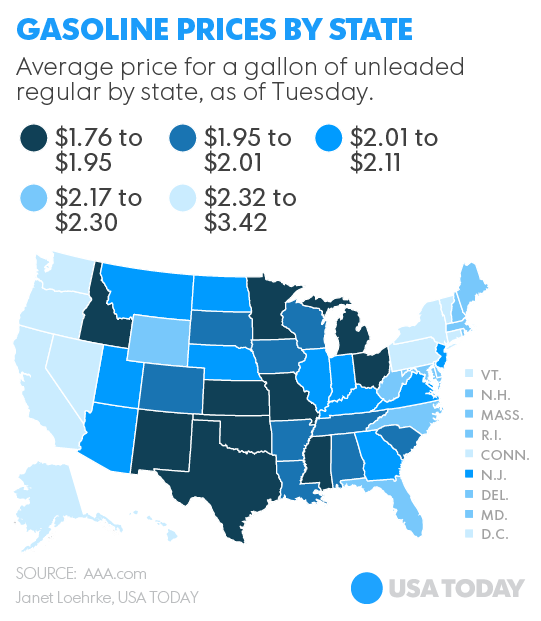Car buyers go shopping for better mileage
With the price of oil down from about $115 to $63 since last June, the impression has been created that the auto world is once again in the hands of the oil industry, and that the gasoline engine is here to stay.
But this week at the Bloomberg New Energy Finance Conference, there was the distinct impression that alternatives to the gasoline engine are moving up so fast that within another five years we may see big changes. Bloomberg Business wrote that the result is “Future transport is likely to look a lot different than what the major oil companies are fueling now. Instead of biofuels such as ethanol and green diesel making the internal-combustion engine fit into a world with greenhouse gas limits, wholesale new solutions are coming fast.”
“Where we are is in an age of plenty,” Michael Liebreich, BNEF’s founder, told Bloomberg. “We have cheap oil, cheap gas, cheap renewables. You do have an abundance of supply in a way you haven’t had for decades. We also are in an age of competition.”
The biggest piece of news is that gasoline consumption has leveled off over the last decade and now is lower than it was in 2006. This is a remarkable development that no one knows quite how to explain. Part of it may be the lingering recession. Fleet mileage improvement has definitely made a difference, improving from 24.5 in 2001 to 31.6 today, a dramatic surge of 29 percent in 13 years. The Age of the Hummer is over, and people are being more selective in shopping for better mileage, even as the vehicles improve.
But Bloomberg Energy sees alternatively fueled vehicles also making headway in a way that is just becoming visible. Electric car sales have quintupled over the last four years, although they did start at a very low base. But battery prices are coming down as rapidly as solar-panel prices, which means that they soon will be in a range where the average American can afford them. Tesla’s 2017 debut of the Model 3, priced in the $35,000 range, is going to be a real turning point, if everything goes right.
Also coming along rapidly is the hydrogen car, which the Japanese auto industry has chosen as its alternative to gasoline. Toyota and Honda are just beginning to market their models in Japan, and BNEF anticipates there will be 4,200 on the road in Japan by 2018. But California is another big potential market, and sales are scheduled to begin there sometime late this year. The California Legislature has responded by expanding the Hydrogen Highway initiated by former government Arnold Schwarzenegger, making it easier for drivers to refuel.
Of course, all these predictions are taking place on a world scale, and there the progress may be even more rapid than in the United States. One thing Tesla discovered in its relatively abortive attempt to crack the Chinese market is that China already has a thriving electric-car industry. The cars, moreover, are not scaled-down versions of powerful sports cars but slow-moving vehicles that have been designed from the ground up.
In an article in Forbes last week, Jack Perkowski outlined what he called “China’s other electric vehicle industry:”
While the global automotive giants struggle to find a winning formula for electric vehicles, approximately 100 manufacturers in China have already identified a large potential market undiscovered by the traditional players. The common problems faced by EV automakers — high cost, driving range, and the availability of charging stations — are not issues for these manufacturers because their target customers are satisfied with low-speed and limited range EVs, as long as they provide affordable transportation. In 2014, 400,000 so-called ‘low-speed’ EVs were sold in China, compared to only 84,000 conventional all electric and hybrid electric vehicles.
To get a glimpse of the size of China’s potential market, consider this: China is already the world’s largest vehicle market, accounting for 25 percent of all vehicles manufactured globally. Yet there is only 1 vehicle per 10 people in China, whereas in the United States there are 8 for every 10 – more than one vehicle for every person of driving age. China also has another huge market for other electric vehicles. It has sold 90 million motorcycles and 120 million electric bicycles.
Estimates are that China now has a million such low-speed EVs on the road now and might reach 3 million by 2020. These cars can do about 48 miles per hour and are used for short runs around town in smaller cities, so range is not a problem. They are doing wonders for air pollution. Manufacture only began in 2006, and already some provincial governments are starting to write requirements that they be preferred to the older gasoline types.
Surprisingly, the only government entity that has been slow to embrace the low-speed EVs is the national government in Beijing. The Central Government has not counted these EVs is their official automotive statistics and is only now starting to write regulations on how crash-worthy they must be and on what roads they will be allowed to travel.
Perkowski concludes: “Low-speed EVs may not fit the stereotype of today’s modern passenger car, but in China, where incomes remain low for a large part of the country’s population, affordability often trumps those values held dear in more developed countries.”
Could China’s low-speed EVs find a market in the United States? It’s certainly possible. In any case, the anti-gasoline revolution may be coming in ways we did not anticipate.


